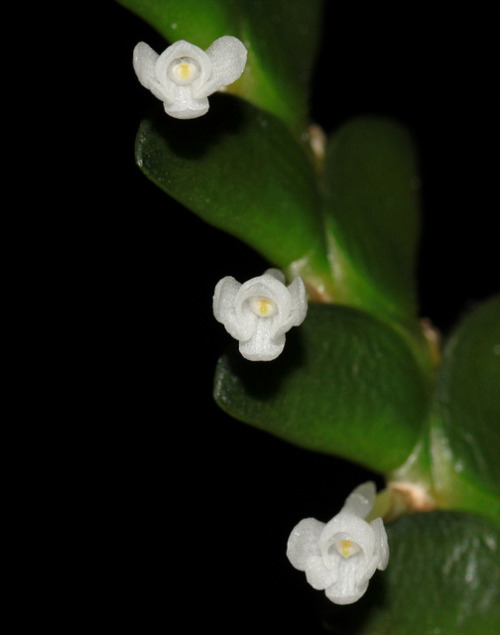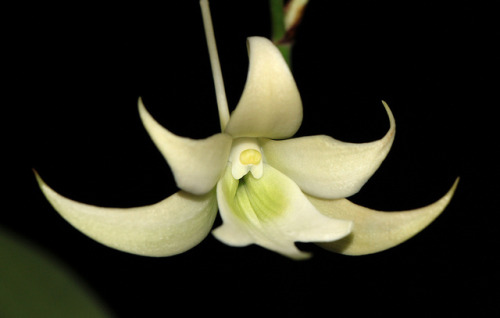#angraecoid
Sobennikoffia humbertiana
Wonderful orchid endemic to dry-yet-humid evergreen and deciduous scrubland in south-west Madagascar where it grows as a lithophyte and sometimes as an epiphyte. This is the first blooming on a plant raised from seed.
© Uluwehi Knecht
Post link
Aërangis brachycarpa
Sweetly-fragrant angraecoid species from cloud-forests of Eritrea, Ethiopia, Kenya, Tanzania, Uganda, Angola, Malawi and Zambia.
© Uluwehi Knecht
Post link
Cribbia confusa
Floriferous, fragrant, colourful, small-flowered angraecoid species native to Côte d’Ivoire, Liberia, Cameroon and Gulf of Guinea Islands 600-2100m elevation. I have tried growing it warm, intermediate and cool and found it does best under intermediate conditions (14-28°C).
© Uluwehi Knecht
Post link
Angraecum aporoides
This handsome relative of Angræcum bancoenseandAngræcum distichum gets its name from its foliage’s uncanny resemblance to that of Section Aporum Dendrobium. Its flowers resemble that of Angræcum distichum but they are larger, roughly double in size.
This orchid grows as an epiphyte on large trees in dark, humid forests in its native range of Nigeria, Cameroon, Gabon, DR Congo, São Tomé, Princípe and Bioko Islands between 0-1300m elevation.
This species belongs to the highly distinctive Section Dolabrifolia of the genus Angræcum. This group was proposed to form a new genus, but the new classification didn’t stick.
© Uluwehi Knecht (photos and text)
Post link









